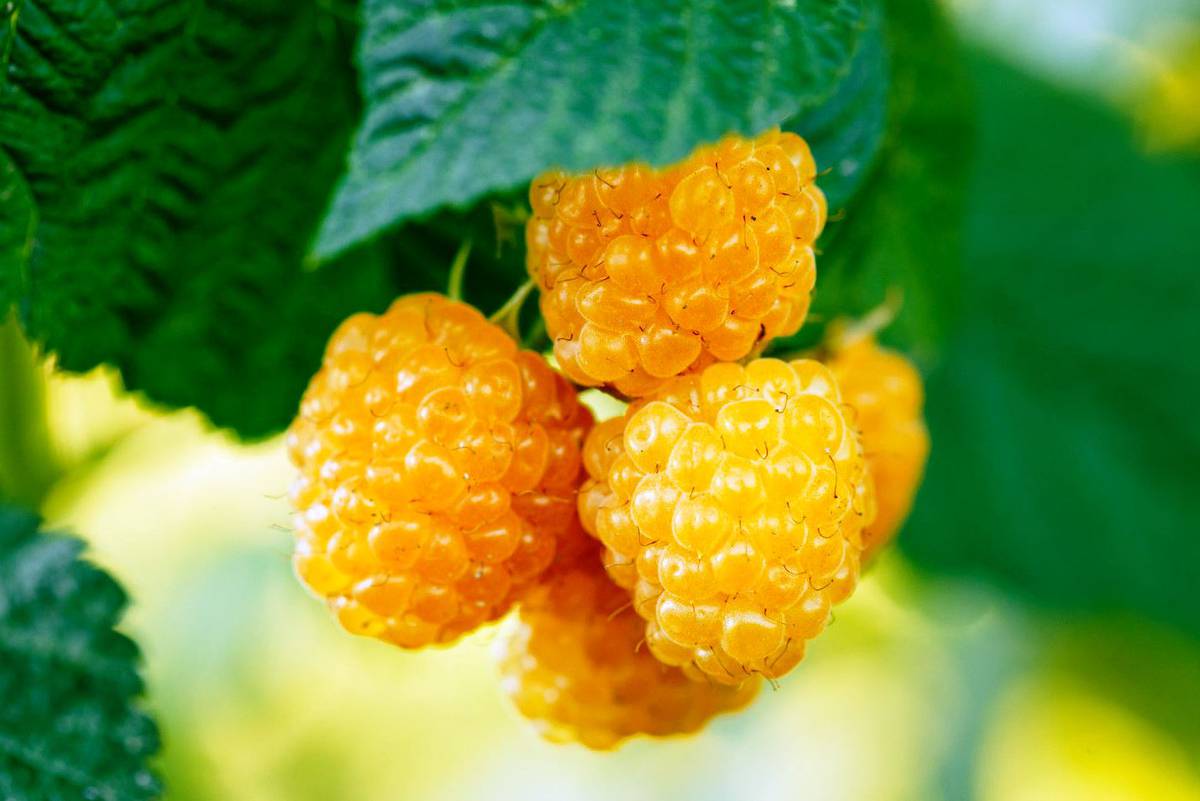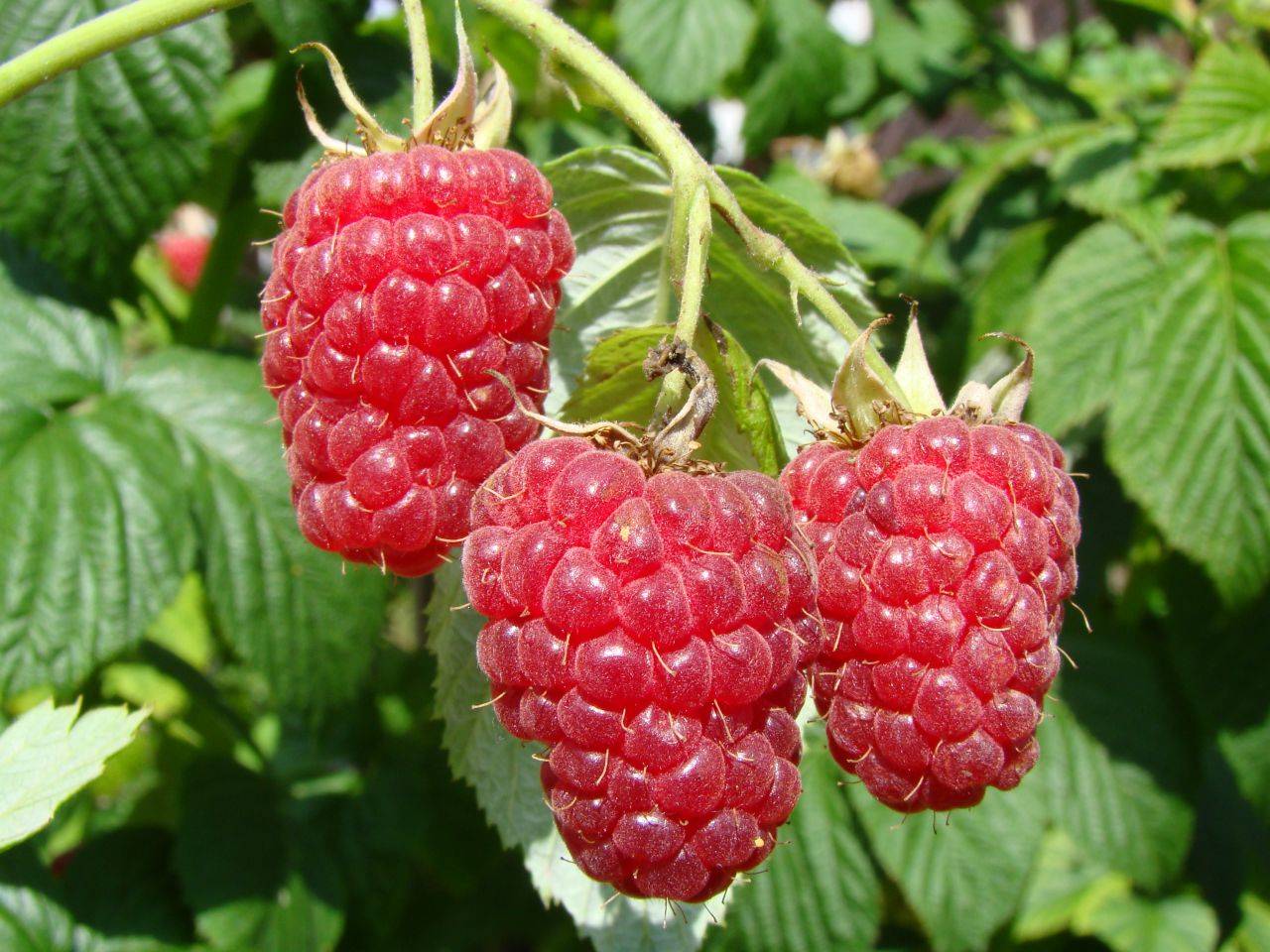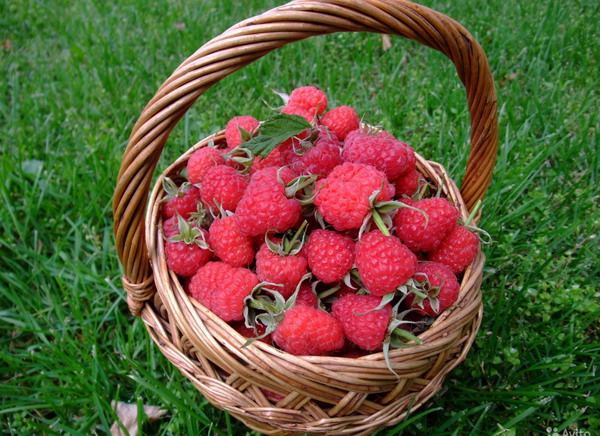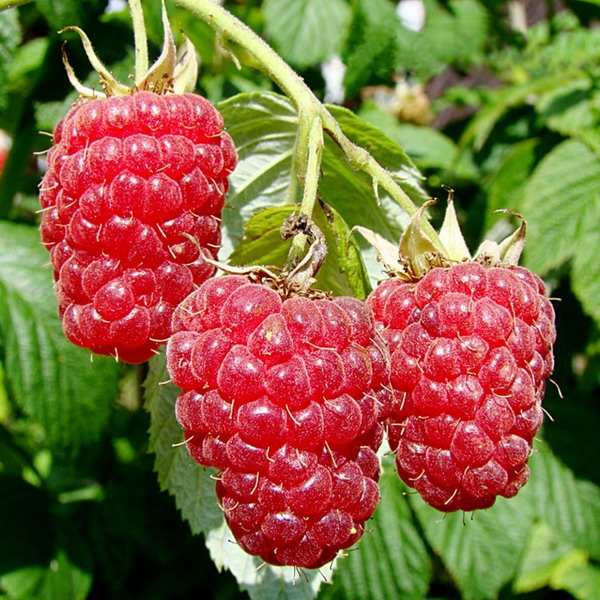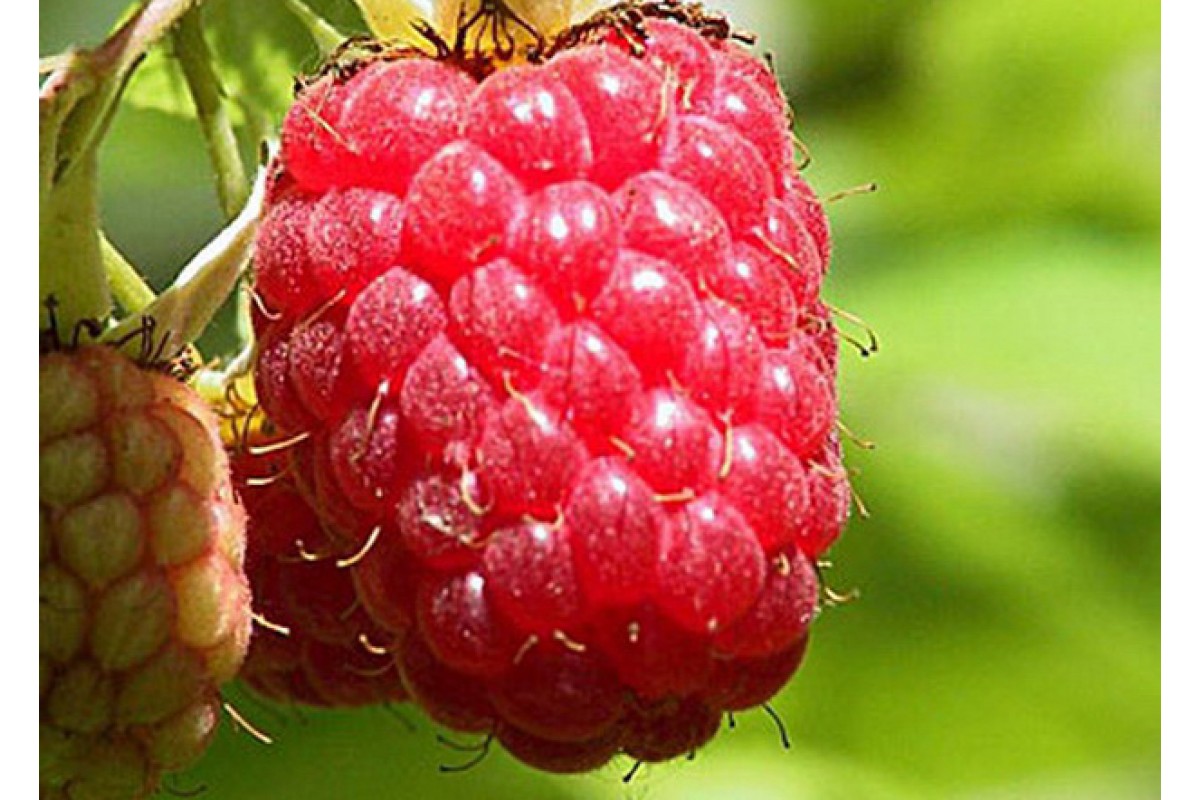Content:
There is no such infield where raspberries would not grow. This miracle berry has not only excellent taste, but is also useful in the winter for colds. There are several types of raspberries:
- ordinary, growing not only in personal plots, but also in the forest;
- large-fruited;
- repairing;
- standard.
Standard raspberry, what is it? What are its characteristics and features? These and other questions are asked by novice summer residents and gardeners.
Features of standard raspberries
The word "shtamb" means the formation of a thick cutting-trunk, due to which the raspberry bush turns into a tree that can grow up to two meters. Such a tree was created with the help of nips. In this case, the root system also ceases to "creep" around the garden and turns into the root system of the tree.
The owners of raspberries on a stem name a number of advantages that they revealed during its cultivation:
- raspberries bear fruit well, while its branches perfectly hold fruits and do not bend;
- berries have excellent taste and aroma;
- the dense texture of the berries allows them to be transported without damage.
Due to the fact that the standard raspberry has a thick trunk, you do not need to use trellises to care for it. On each branch, shoots are formed, where clusters with berries are formed.
Variety "Galaxy"
The fruits of the Galaktika raspberry tree grow in a cone-like shape and weigh from 5 to 18 grams each. The first crop is harvested in June. Ripening of the rest occurs throughout the month. The berries are sweet, aromatic, and melt in the mouth. The advantages of this variety include:
- a large harvest every year - 4 kilograms per bush;
- unpretentious in care;
- does not take root throughout the garden;
- does not get sick;
- the berries are large and sweet.
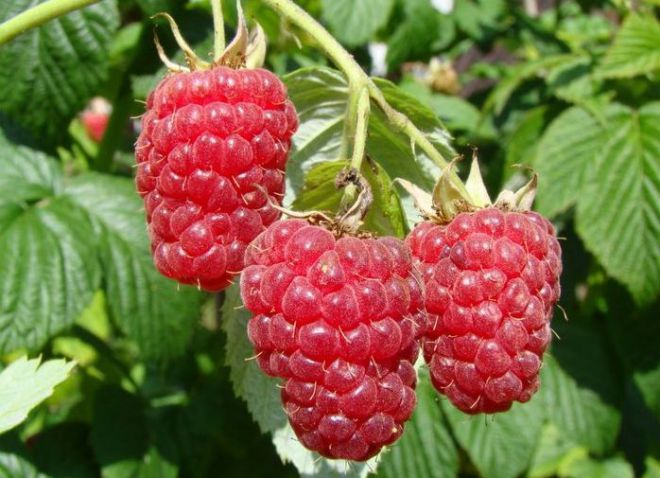
Raspberry berries "Galaxy" are fragrant, melt in your mouth
The disadvantages of this variety are expressed in the following:
- raspberries have too tender skin;
- cannot be transported;
- does not keep fresh for a long time.
The stem raspberry "Galaxy" grows up to two meters in height. Its branches, although they require a small garter, are still strong, stable. For replacement, it releases only seven to ten shoots. Such reproduction is enough to grow raspberries in your area. In winter, in the absence of snow and air temperatures down to -30 degrees, bending is required.
Variety "Krepysh"
Another type of raspberry tree is the Krepysh variety. This varietal bush lives up to its name. Its branches and trunk are quite strong and resilient, which allows it to withstand rain and wind. Due to this quality, raspberries on a stem bear fruit well. The advantages of the variety include:
- Ripening period is medium-early;
- High yield of fruits weighing up to 9 grams, which are removed from the bush up to four kilograms per season;
- The fruits are easily removed from the stalk, lie fresh for a long time and lend themselves to transportation;
- The tree does not suffer from fungal and viral diseases, tolerates up to -30 degrees of frost.
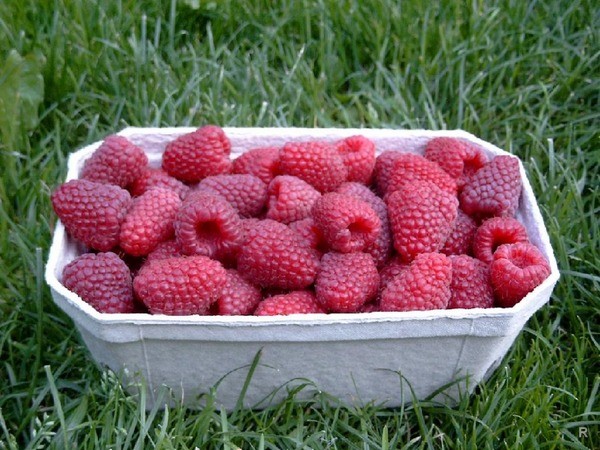
Raspberry fruits "Krepysh" keep well
Variety "Tarusa"
The Tarusa varietal bush was the very first raspberry standard tree, which was registered in 1993 in Russia. This variety is the result of crossing Stolichnaya raspberries with a stamped tree.
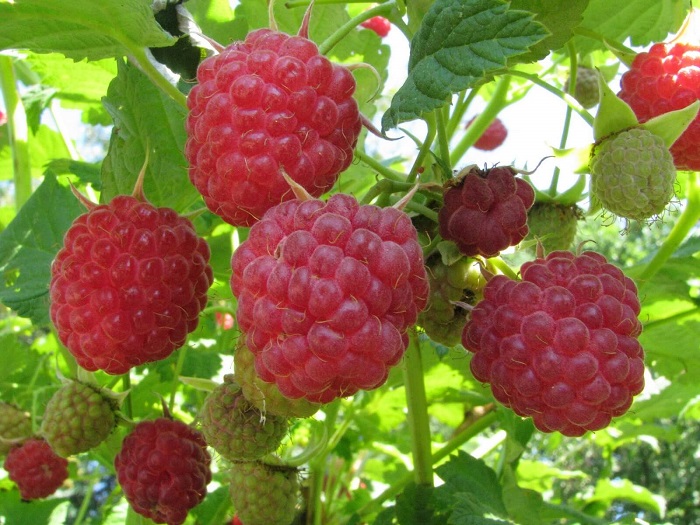
Raspberry varieties "Tarusa"
Tarusa grows only one and a half meters in height, and there are no thorns on its trunk and branches. It is this variety that most resembles a tree.
The raspberry tree bears fruit abundantly: at least four kilograms of fruit can be harvested from one bush, while one berry weighs at least 16 grams.
The main advantage of the variety is its resistance to frost - even at -30 degrees, it does not need to bend down, it is resistant to diseases.
Main features of care
Each of the varieties of standard raspberries is planted in spring or autumn. In the spring, mid-April is chosen for this, when sap flow in the trunks has not yet begun. It is better to plant in autumn in late September - early October. At the same time, when planting, the soil must be hilled to the lowest buds.
Such varieties sit in two ways:
- bush;
- tape.
It should be remembered that the soil must be prepared in advance. If you plan to plant raspberries in the spring, then the site is treated in the fall. Autumn planting is allowed if preparatory work was carried out on the site one and a half months before disembarkation.
When planting standard raspberries, you must adhere to the following instructions:
- the soil is loosened and fertilized before planting;
- if the soil has high acidity, then before planting it must be sprinkled with lime at the rate of half a kilogram of dry powder per square meter;
- pits are dug 50 x 50 centimeters in size, while the depth should correspond to the development of the root system;
- the distance between the bushes should be up to a meter, between the rows - up to two meters;
- the roots of a raspberry bush are pre-dipped in a solution of clay and mullein before planting;
- humus or rotted sawdust is laid out on the bottom of the pits, covered with a little earth and raspberries are planted;
- from above, the roots of raspberries must be mulched with the same humus or sawdust, which will help to retain moisture near the roots for a long time.
To get a great harvest, raspberries need to be fed. To do this, take 50 grams of urea and dilute it in 10 liters of water. When using organic fertilizers, you need to adhere to the following proportions:
- mullein infusion is made at the rate of 1 to 10;
- infusion of chicken manure - 1 in 15.
If the bush is not blooming yet, then it needs to be sprinkled with nitroammophos. In this case, you can also use the introduction of mineral fertilizers, which include potassium, phosphorus, nitrogen.
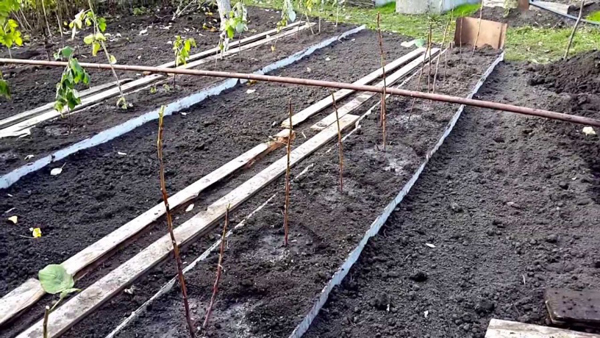
Planting standard raspberries
Raspberries need to be cared for as they grow. In order for the plant not to hurt, use the drug "Topaz", which will prevent raspberry diseases. It will not be superfluous to spray the bushes from pests. For this, the drug "BI-58" is perfect.
At a time when raspberries are actively growing and bearing fruit, they need to be watered. In hot summertime, the amount of water that needs to be poured under a raspberry bush is up to 10 liters of water.
To get a raspberry tree, you need to pinch it regularly. For this, 10-15 centimeters of tops are cut off. Thus, the lateral branches begin to grow, and in the fall you will get an excellent raspberry bush. In the autumn, those shoots that have already borne fruit must be cut off, while remaining young and strong. In the spring they need to be cut in the same way. Before preparing for wintering, young shoots need to be bent down, while pre-cleaning the stem from leaves. To do this, you must use a mitten, otherwise the hand may be injured.
Important! In the first year after planting, raspberries will not give a high yield, the next, with proper care, you can get up to 12 kilograms from a bush.
After reading the description of planting and caring for a raspberry tree, every novice gardener will be able to grow it on his site. Every year raspberries will delight you with their harvest. At the same time, what kind of raspberry variety to plant on the site, the summer resident must determine independently, referring to the desired characteristics.

